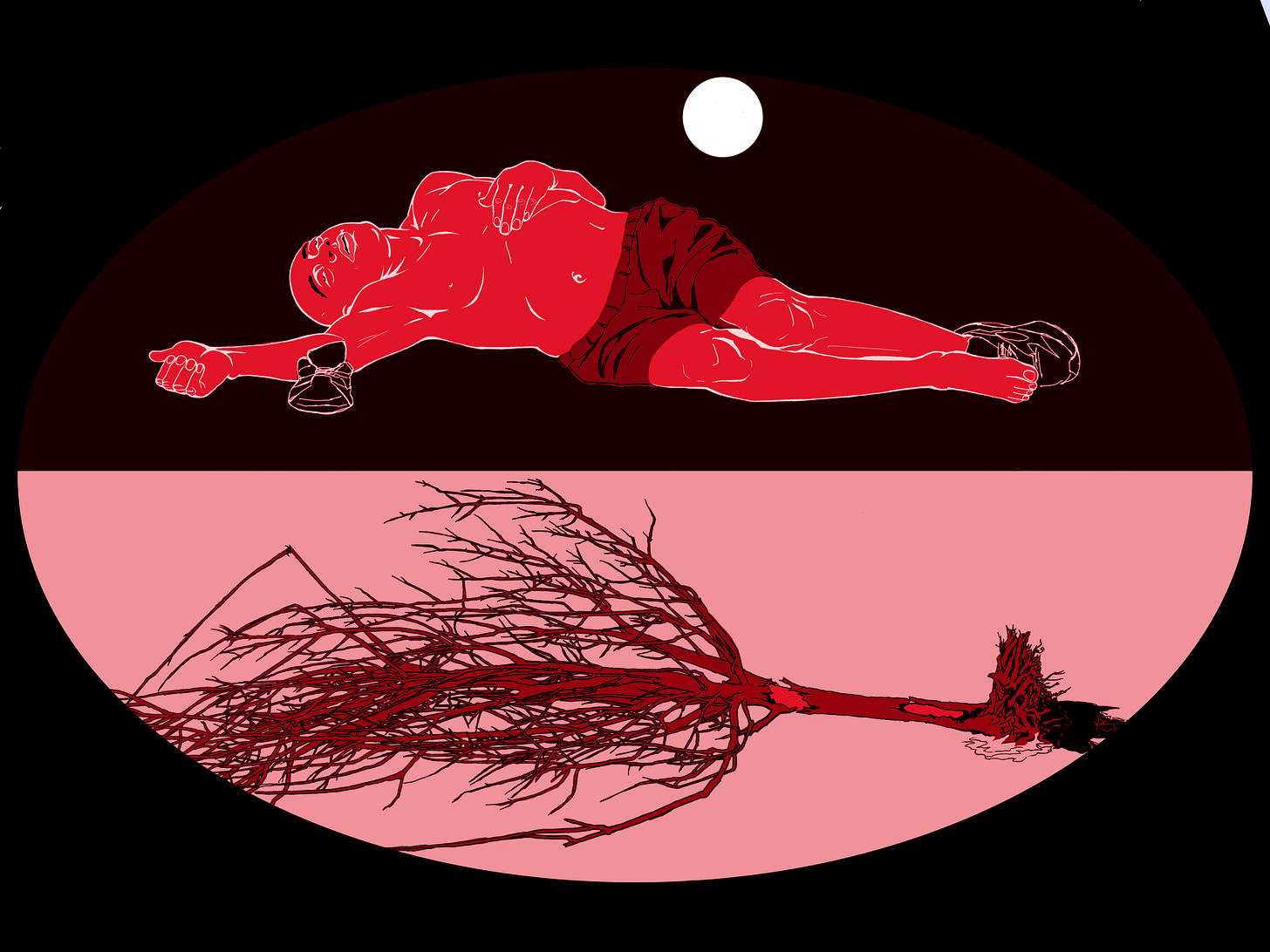Lance Flowers, “Stumbles and Roadblocks.”
Beginning in 1839, city officials divided Houston into four wards, each of which contained growing enclaves of migrants, including Jews, Irish, Italians, Germans, and, most predominantly in the aftermath of the Civil War, newly freed slaves. Houston’s famously labyrinthian bayous served to demarcate what by the end of the 19th century became a total of six wards. While the city government stopped recognizing the wards as geopolitical units in 1905, Houston residents and creative souls spanning ethnic populations, including musicians (Beyoncé), rappers and producers (DJ Screw, Scarface), and visual artists (Tierney Malone, El Franco), continue to proudly identify with and celebrate the cultural history of the wards. An expansive, multidisciplinary exhibit by Southern American artist, writer, and activist Lance Flowers, titled Take Me As I Am: Redemption and Grace for the Discarded, on view at Hogan Brown Gallery located in the historic Eldorado Ballroom in the Third Ward, is one such example.
Curated by fellow artist Robert Hodge, the exhibit opened October 23 and runs through December 5. The official opening takes place this Saturday, Nov. 16, from 6-9 p.m., with music provided by DJ and ethnomusicologist Jason “Flash Gordon Parks” Woods. Sadly, Take Me As I Am will be the Hogan Brown Gallery’s final show.
The physical scope of Take Me As I Am extends beyond the interior of Hogan Brown, with Flowers’ radiant collages and deceptively rough-hewn assemblages of found objects on display in several well-loved Third Ward businesses and cultural spaces, including Kindred Stories, Gulf Coast Cosmos Comicbook Co., and Doshi House, to name just a few. Meanwhile, many miles away from Third Ward, the Yale Institute of Sacred Music is hosting yet another incarnation of the exhibit in its Miller Hall through Dec. 4. (In October, Flowers, Hodge, and Woods traveled to Connecticut for the installation and a talkback with the community.)
Lance Flowers, “Sankofa Mexica.”
Flowers settled in the Third Ward in 2007, and his creative and spiritual connection to the community is clearly articulated via his creative vision. It is fascinating to see how the art of collage continues to be a source of inspiration for generation after generation of artists, as Flowers uses the language to recast the “overlooked and discarded” elements of a community into objects of living power. Take Me As I Am is also a call to engagement and activism, as gentrification continues to threaten the livelihood of residents and institutions located in the Third Ward and other underserved, predominantly Black communities. It’s inspiring to witness Flowers and so many other artists rallying at a time when it is easy to feel overwhelmed and despair. But as the poet Toni Morrison said, “This is precisely the time when artists go to work. . . . We speak, we write, we do language. That is how civilizations heal.”





